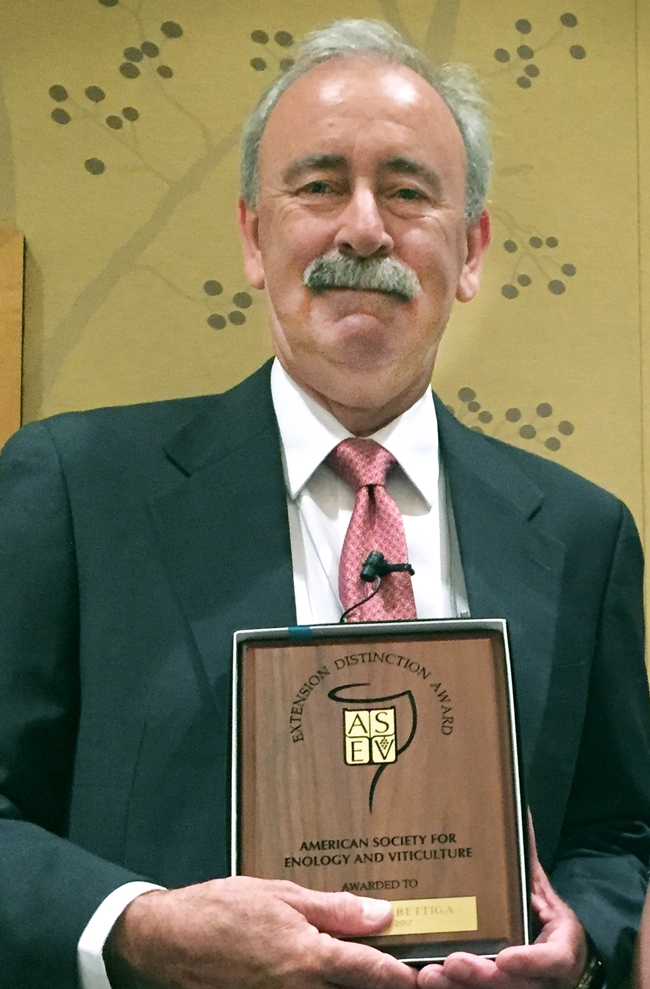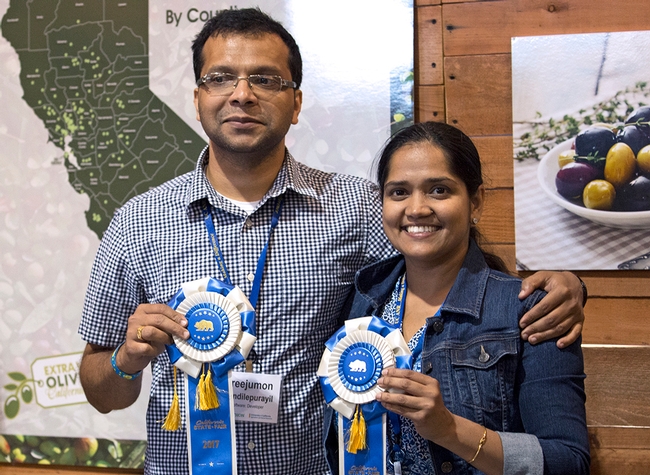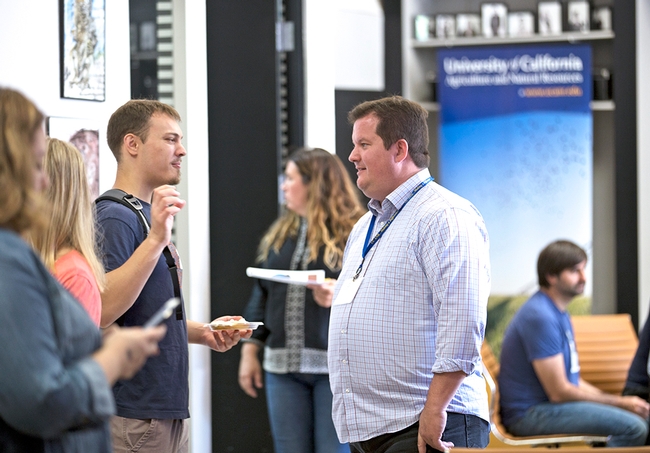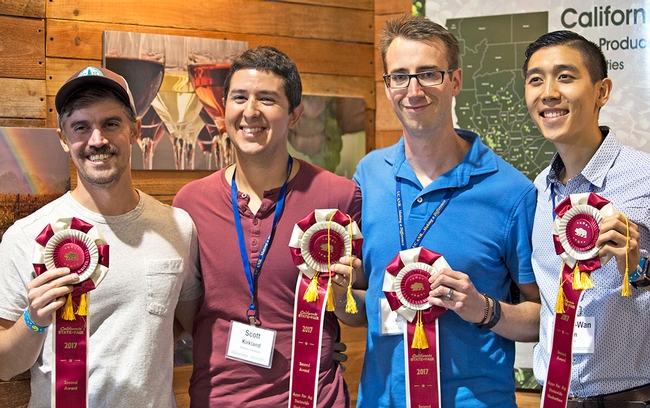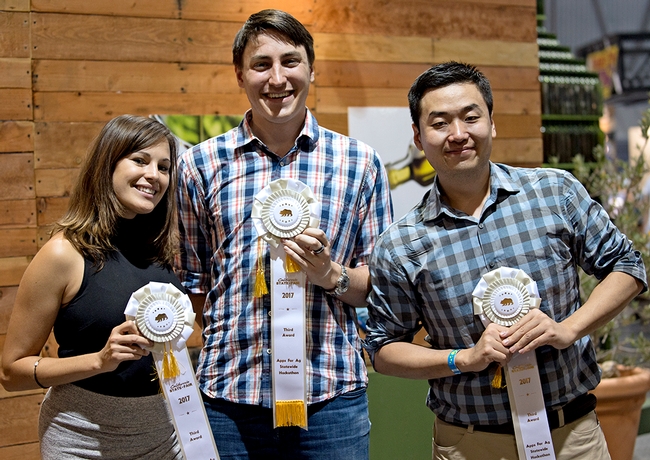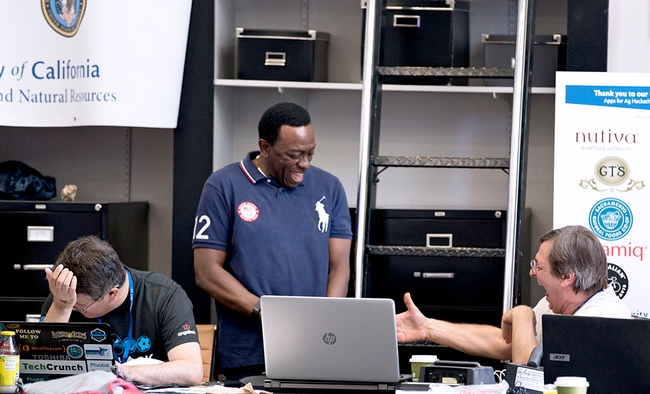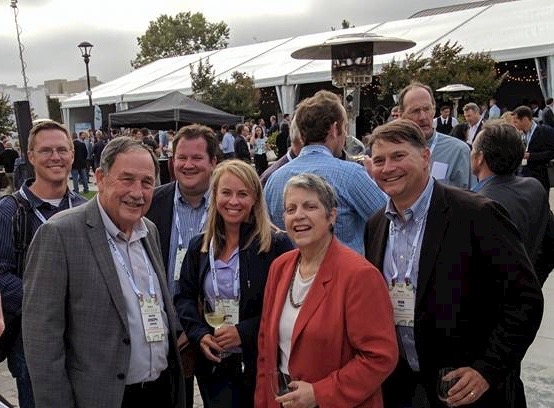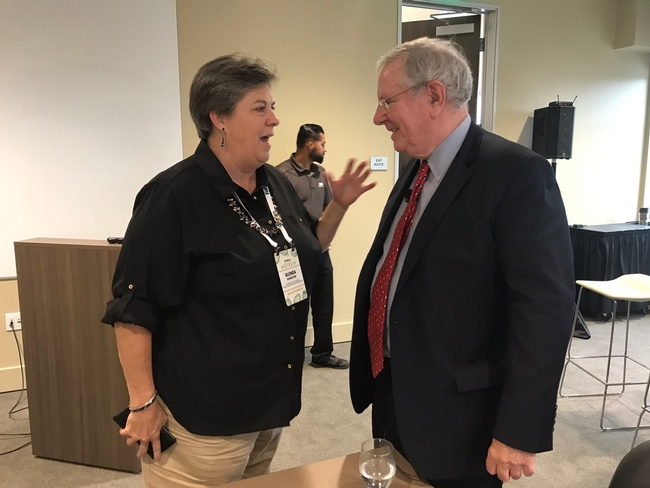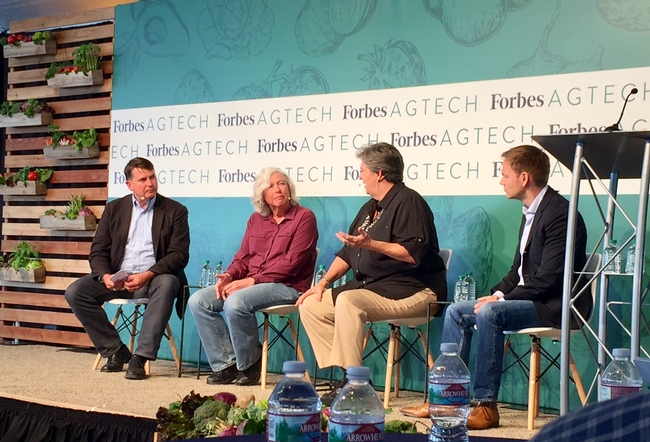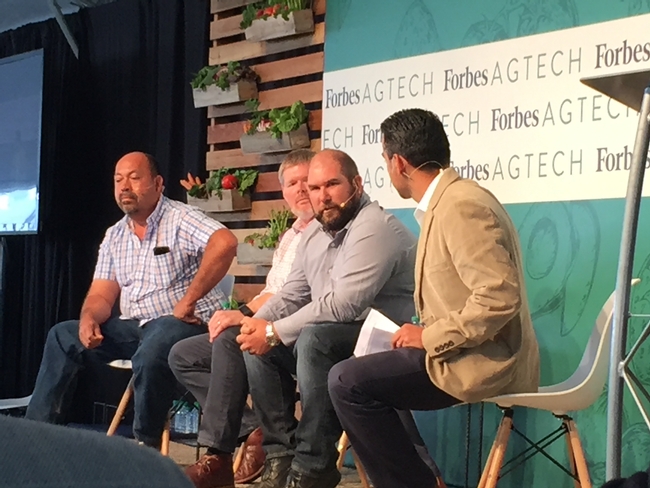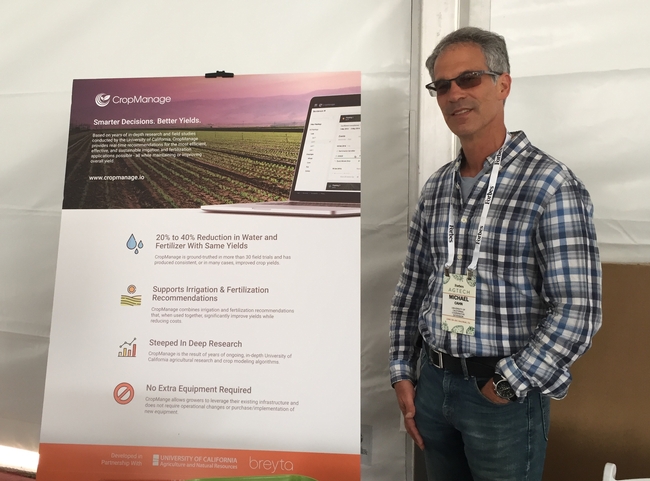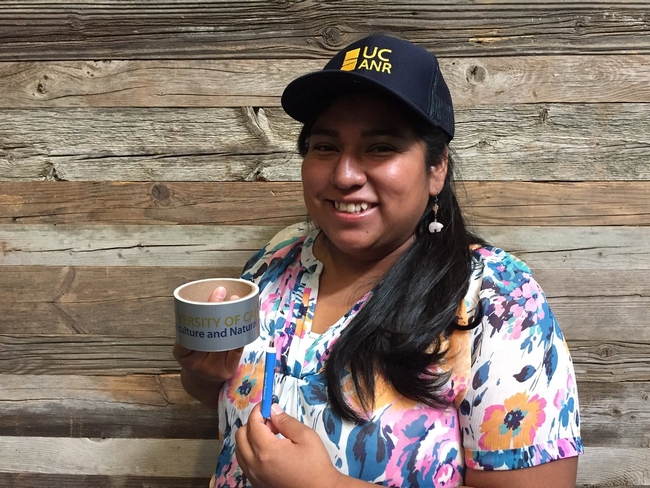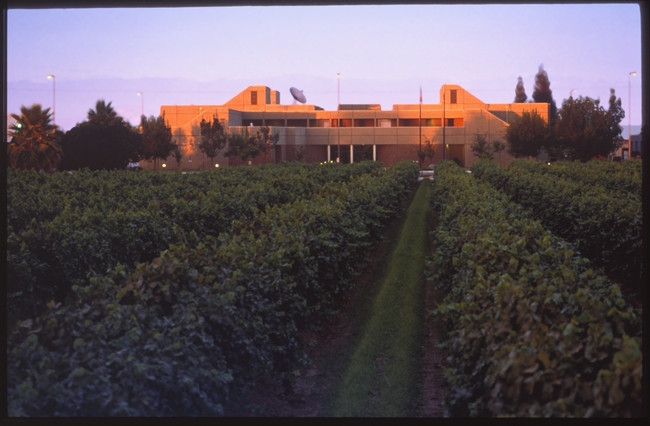Posts Tagged: computers
Names in the News
Gibbs named major gifts director
Gregory Gibbs joined Development Services as director of major gifts on July 1. In this role, Gibbs heads the Major Gifts fundraising team on behalf of UCANR.
Gibbs joined the UC system in 2006 as development director for the UC Davis College of Engineering. He later assumed additional responsibility as senior director of Corporate Relations in the Engineering Dean's office. During his tenure at the UC Davis College of Engineering, Gibbs's team was responsible for raising over $90 million in donor funds for students, faculty, infrastructure and academic programs.
After graduating from the U.S. Air Force Academy, Gibbs began his career in 1985 as an officer in the U.S. Air Force, designing and analyzing satellite and missile systems to ensure national security. In 1992, he transitioned to the private sector and progressed through a series of technical sales and sales management positions of increasing responsibility at Ceridian Employer Services and Ascolta, a Cisco-certified Learning Solutions Partner focused on IT education. He subsequently relocated from Colorado to California to join the UC team.
His husband, Emilio Bejel, is a UC Davis distinguished professor in the Department of Spanish and Portuguese.
Gibbs is based in the ANR building at 2801 Second St. in Davis, and can be reached at (530) 750-1371, cell (530) 848-7860 and glgibbs@ucanr.edu.
ASEV honors Bettiga with Extension Distinction Award
Larry Bettiga, UC Cooperative Extension viticulture farm advisor, received the American Society for Enology and Viticulture's Extension Distinction Award at ASEV's 68th National Conference in Bellevue, Wash., on June 28. This honor recognizes a current extension educator for outstanding contribution to an extension program or the advanced translation of novel research findings into commercially applicable tools for enologists or viticulturists.
Bettiga's research focuses on the influences of cultural practices, rootstock and clonal selection, and canopy management on grapevine growth and productivity, and the use of integrated approaches to solve pest management problems in coastal winegrape production systems. Bettiga has been a UCCE viticulture farm advisor for the past 32 years and currently conducts applied research and extension education programs for winegrape growers in Monterey, San Benito and Santa Cruz counties.
While stationed at the UC Kearney Agricultural Research and Extension Center in Parlier, he evaluated cultural practices for table, wine and raisin grapes to improve yield and quality for grape production in the southern San Joaquin Valley. He also worked on pest management projects for grapes and tree nuts while based at the UC Cooperative Extension office in Tulare County.
Bettiga has authored and co-authored more than 400 technical articles, newsletters, research reports and abstracts. He has been an active member of ASEV since 1984, serving on the board of directors for five years, and was board president from 1999 to 2000.
Apps for Ag Hackathon winner uses AI to diagnose plant problems
For 48 hours, innovators and entrepreneurs at the Apps for Ag Hackathon labored over laptops at The Urban Hive in Sacramento before pitching their ideas to judges at the California State Fair. More than 40 people, some from as far as New York and Texas, competed for a $10,000 grand prize and assistance from UC Agriculture and Natural Resources to turn their ideas into commercial enterprises.
Ultimately Dr. Green, a mobile app to diagnose plant problems, took the top prize on Sunday (July 30). The second-place Greener app also helps people diagnose and treat plant diseases. Farm Table, an app that promotes agritourism, came in third place.
One goal of the hackathon was to produce solutions for military veterans who are becoming farmers. The U.S. Department of Veterans Affairs was a major sponsor of the event and leaders from Washington D.C. were on site all weekend participating.
“There was an amazing range of applications this year,” said Gabriel Youtsey, chief innovation officer.
Twelve teams pitched new ways to apply technology to improve the food system.
“There was an application to take a picture of a plant and it'll identify the plant disease – which can help anyone from backyard gardeners to professional growers – all the way to an application for community-supported fisheries, which helps fishermen better scale their businesses and allows for customers to get the freshest fish,” Youtsey said.
There was an app to match unemployed veterans with farm jobs, an online resource for bees, an app to simplify shipping logistics, an app for detecting mold on produce and many more solutions for food-related problems.
1st Place: Dr. Green
Figuring out why a plant is ailing can be time-consuming for a new farmer or backyard gardener. The plant doctor is always in with Dr. Green. The app created by Sreejumon Kundilepurayil and Vidya Kannoly of Pleasanton will help people identify crop diseases quickly through artificial intelligence and machine learning. The app can incorporate data from sensors monitoring temperature, light and soil moisture to alert growers to problems. Using a smart phone, backyard gardeners and growers can take a photo of plant symptoms and get a diagnosis or use the messaging feature to ask a question about symptoms and receive advice immediately.
Kundilepurayil and Kannoly won $10,000 and tickets to the UC Davis Food and Ag Entrepreneurship Academy, $3,000 worth of Google Cloud Platform credits, plus other resources to help the team start their venture.
2nd Place: Greener
Using a smart phone, home gardeners can take a photo of plant symptoms and quickly get a diagnosis and recommended integrated pest management treatment from the Greener app, created by Scott Kirkland, John Knoll and Shiang-Wan Chin of Davis and Calvin Doval of Oakland. They won $5,000 and $1,000 worth of Google Cloud Platform credits and other resources to help start their venture.
3rd Place: The Farm Table
The Farm Table app aims to make farms more economically sustainable and educate the public about food through agritourism. Heather Lee of San Francisco teamed up with Will Mitchell of Sacramento and Zhenting Zhou of New York City to create the agritourism app.
“We are making agritourism accessible to farmers by building a platform that's connecting visitors with farms,” said Lee. “This is going to help educate our communities on where their food comes from and create an additional revenue source for farmers.”
They won $2,500 and $1,000 worth of Google Cloud Platform credits and other resources to help start their venture.
Growing the pipeline of young innovators
Judges included Joshua Tuscher of the U.S. Department of Veterans Affairs; Robert Trice, investor and founder of The Mixing Bowl Hub; Jenna Rodriguez, product manager at Ceres Imaging; Ann Dunkin, chief information officer for the County of Santa Clara; and Jessica Smith, vice president of Strategic Partnerships at AngelHack.
Apps for Ag is a food and agriculture innovation event series hosted by UC ANR and sponsored by IO Labs, The Urban Hive, California Community Colleges and the California State Fair.
“We're growing the pipeline of young innovators, getting entrepreneurs and technologists interested in applying technology to solving problems in the food system,” said Youtsey, who led organization of the hackathon.
“UC ANR is the original innovation engine in food, agriculture and natural resources in California and has been so for over 100 years. This is just taking another spin at tackling innovation in food and agriculture through an innovative competition style format with technology,” he said.
Additional support for the hackathon was provided by Valley Vision, The Mixing Bowl, Farmer Veteran Coalition, AngelHack, Nutiva, Google Cloud Platform, Royse Law Firm, Hot Italian, GTS Kombucha, Startup Sac, AgStart, StartupGrind Sacramento, Future Food, Internet Society San Francisco Bay Chapter, Sacramento Food Co-op, Balsamiq and YouNoodle.
Tech meets ag at Forbes AgTech Summit in Salinas
“As we confront the problems in California today, we must ask ourselves, how will ag and tech solve these problems together? How can Salinas Valley and Silicon Valley work more harmoniously and how will the University of California's quest for new knowledge play a role?” said UC President Janet Napolitano to farmers, engineers, entrepreneurs and others attending the Third Annual Forbes AgTech Summit.
Silicon Valley, the birth place of high tech, converged with Salinas Valley, “the nation's salad bowl,” on June 28 and 29 in Salinas to explore opportunities to apply technology to agriculture's challenges. About 700 people participated in the invitation-only event, which was co-sponsored by the University of California and UC ANR.
“The Forbes AgTech Summit brings together individuals and institutions from two integral parts of California's economic engine — agriculture and technology,” Napolitano said. ”The two have historically remained on parallel paths, each fueling the state's growth, but rarely converging. Yet, this is a unique moment here in California, and we have a unique opportunity in this nexus of agricultural bounty and technological innovation.”
Steve Forbes, chairman and editor-in-chief of Forbes Media, told Farm to Table Talk podcast, “Knowledge comes from experimentation, constant discovery, which agriculture has been doing for well over 1,000 years. That pace in agriculture is increasing today. There's no reason why, if we don't do silly things, the world, even though population will grow by 2 billion in the next three decades, the world won't have sufficient food, more abundant and healthier food than we can even imagine today. Human ingenuity will do it.”
VP Glenda Humiston joined Sallie Calhoun, owner and manager of Paicines Ranch, and Trent McKnight, rancher and founder of Agricorps, to discuss challenges and opportunities to grow entrepreneurs in agriculture with moderator Rob Trice, co-founder and partner of The Mixing Bowl. McKnight said there is technology gap between rural and urban America. Humiston noted that poor access to high-speed broadband in rural regions could slow their adoption of technology.
In a four-minute video produced by Forbes, Humiston discusses challenges and opportunities for agriculture. She describes how The VINE, or The Verde Innovation Network for Entrepreneurship, is being launched by UCANR and led by Gabriel Youtsey, chief innovation officer, to cultivate regional innovation and entrepreneurship ecosystems in rural communities.
Between the rising cost of minimum wage, an aging working population and immigration crackdowns, farming is facing a worker shortage. Brian Antle of Tanimura & Antle, Dan Steere, co-founder and CEO of Abundant Robotics, and Javier Zamora, owner of JSM Organics, discussed with moderator David Mancera of Kitchen Table Advisors, how technology could perform work that people don't want to do. Antle pointed out that while machines can plant and cut, they cannot replace the judgment of skilled workers.
In her address, Napolitano explained UC's interest in agricultural technology.
“We started the UC Global Food Initiative three years ago to find scalable solutions to sustainably and nutritiously feed a growing world population — one that's expected to reach 8 billion people by 2025,” Napolitano said. “At the same time, for more than a hundred years, people at UC Agriculture and Natural Resources have equipped farmers across the state with the latest scientific and technological advances in agriculture.
“They connect cutting-edge innovation with the state's farmers, who produce half of the nation's fruit and vegetables and export food to countries around the world. And they are constantly generating and testing new ideas.”
See related news coverage:
Napolitano Says Ag Needs Technology
Greater collaboration between ag and tech coming
University of California kicks off Ag innovation program
Labor shortage in ag fueling technology
Thanks for helping tell ANR’s story
Myrna Cadena was our first UC ANR Ambassador winner.
For easier access to share UC ANR social media posts, sign up to become a UC ANR Ambassador. You'll also have the opportunity to win exclusive prizes. To join our Social Toaster campaign, visit http://ucanr.socialtoaster.com. You can sign up for the program with your social media network of choice.
Kearney REC requests proposals
The Kearney Agricultural Research and Extension Center (KARE) is requesting proposals for new research and demonstration projects for the period Nov. 1, 2017, through Oct. 31, 2018. Research rate for new projects will be approximately $30 per hour.
Located near Fresno in the San Joaquin Valley, Kearney has 330 acres suitable for many types of tree, vine, and row crops and environmental research.
Kearney has the most extensive specialized agricultural research facilities of any off-campus location within UC: modern greenhouse, postharvest facilities, sample handling (including cold storage and drying), sensory evaluation and associated research laboratory facilities. This year, a soil weighing lysimeter is available for plant water-use studies.
Substantial open ground, plantings of grapes, stone fruit, kiwi and alfalfa are becoming available.
Proposal forms are to be submitted electronically via the “Universal Review System” accessed through your UC ANR Portal by Oct. 2, 2017. Forms are located at http://recs.ucanr.edu/For_Researchers/Research_Proposal_Application_and_Forms.
To submit the required forms, follow these simple steps:
- Log into your portal at https://my.ucanr.edu.
- Click on “Login to Universal Review System”.
- Under “Open Systems” select “Kearney REC CALL FOR RESEARCH PROPOSALS 2017-2018”.
- Fill out the “New Proposal” form, then submit it using the “Create Proposal” button at the bottom of the page.
If you have questions about field research management, contact Dale Pattigan at (559) 646-6022 or dpattigan@ucanr.edu. For questions about the facilities, contact Laura Van der Staay at (559) 646-6030 or ljvanderstaay@ucanr.edu.
Other questions may be directed to Jeff Dahlberg, KARE director, at (559) 646-6060 or jadahlberg@ucanr.edu. For assistance with submitting your proposal, contact Janie Duran at njduran@ucanr.edu or (559) 646-6010.
To learn more about Kearney Agricultural Research and Extension Center, visit http://www.kare.ucanr.edu/


